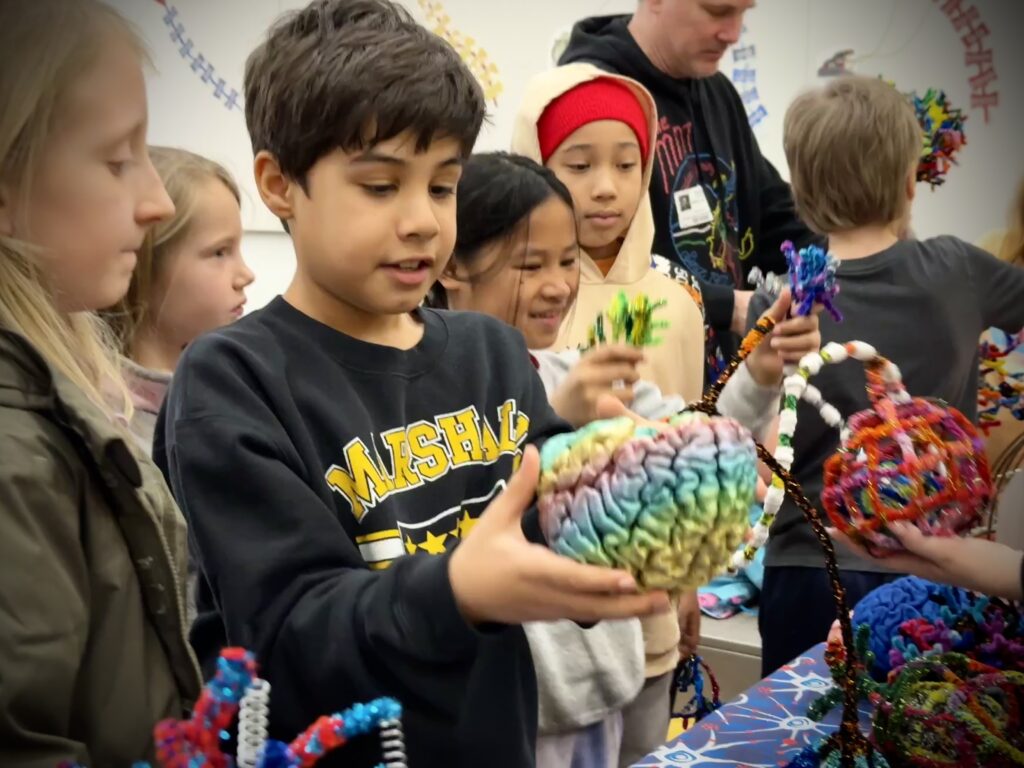It’s February, and we are DEEP into our winter outreach schedule, which this term reaches from Portland and Vancouver, Corvallis and the Oregon State Capitol – all the way to Washington DC!
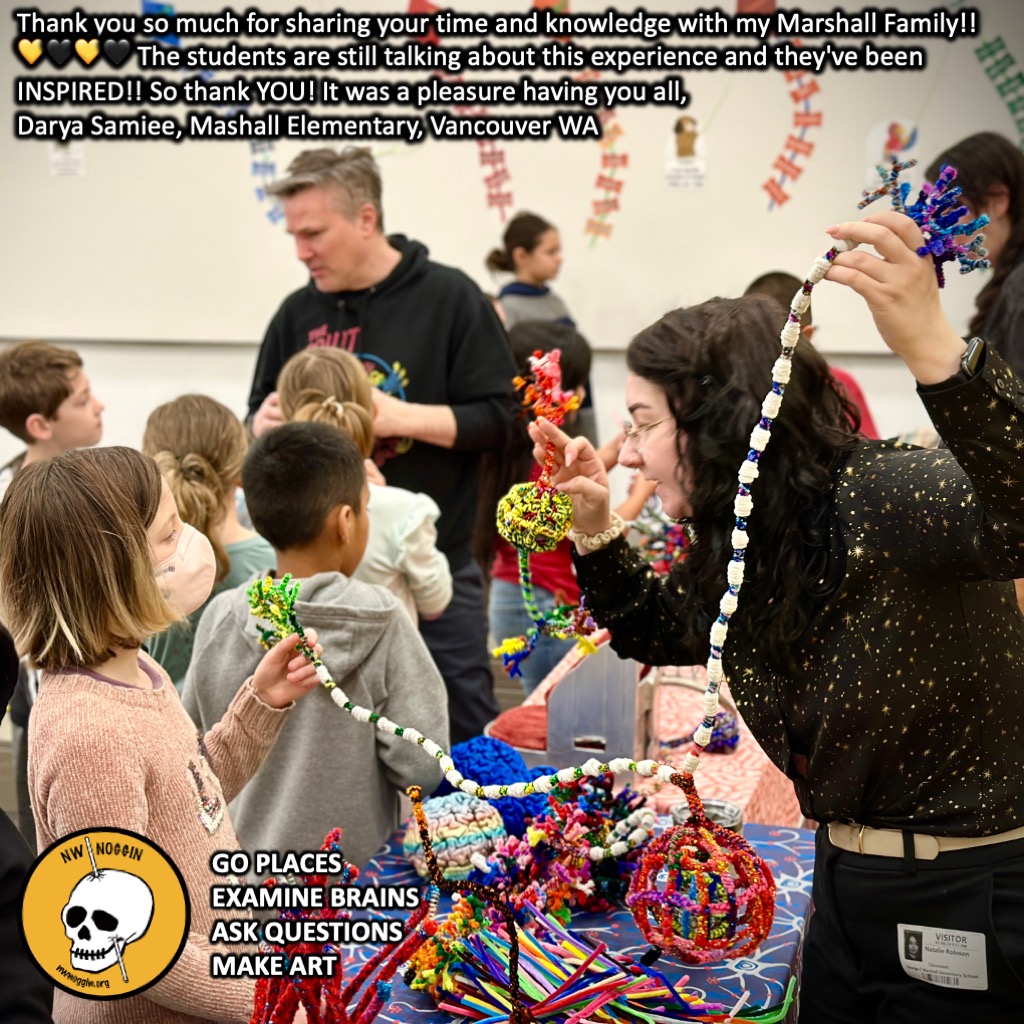
Some huge thanks: our extensive all-volunteer efforts received welcome boxes of pipe cleaners, PLA filament and other art supplies, including a cool and colorful new magnetic, take-apart brain model, from the Dean of the College of Liberal Arts and Sciences (CLAS) at Portland State University!
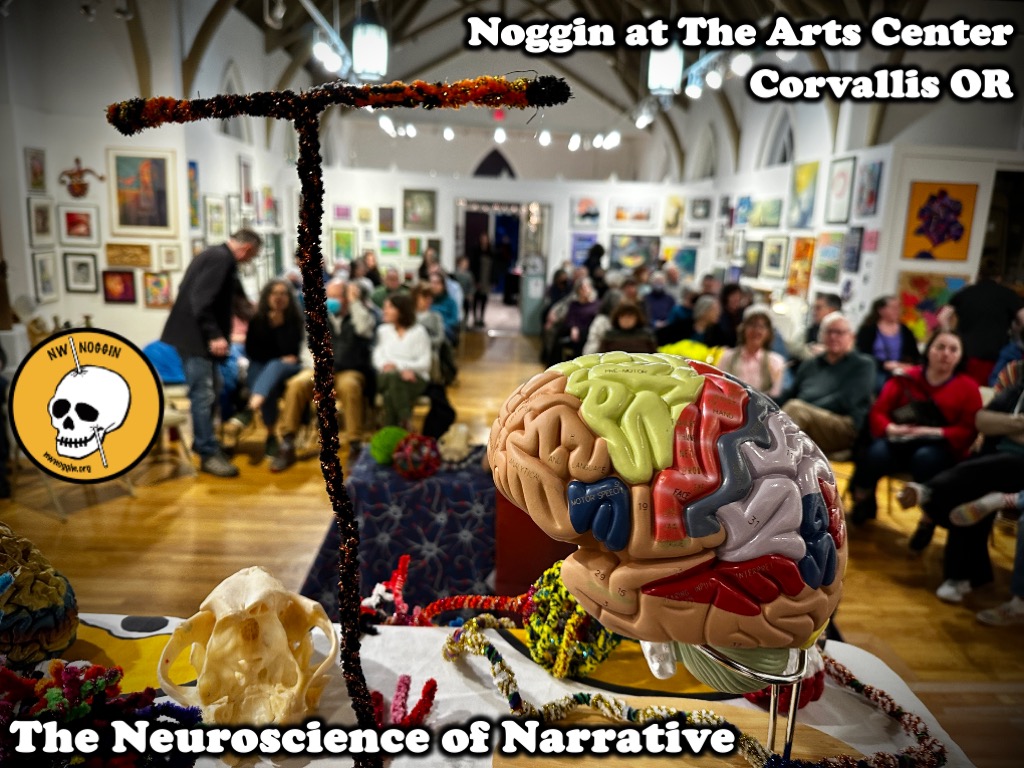
LEARN MORE: The Neuroscience of Narrative
LEARN MORE: NW Noggin Calendar of Events
The extraordinary Roundhouse Foundation also made it possible for us to grow our networks out east, with support for housing, travel, food, and attendance at the compelling NEA/White House Arts Summit.
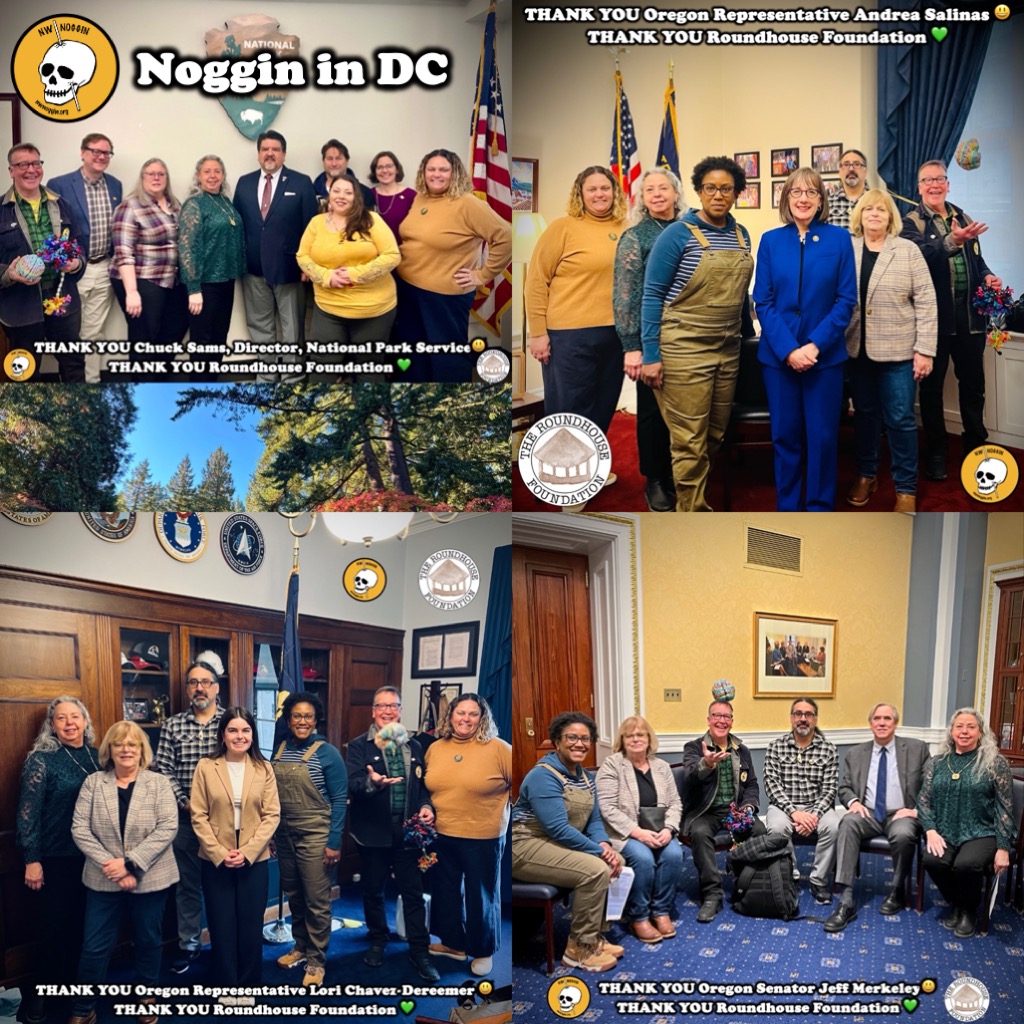
LEARN MORE: STEAMing back to Washington!
And we absolutely LOVE packing up our noggins and skulls, and heading to all the incredible public schools in the Pacific Northwest!
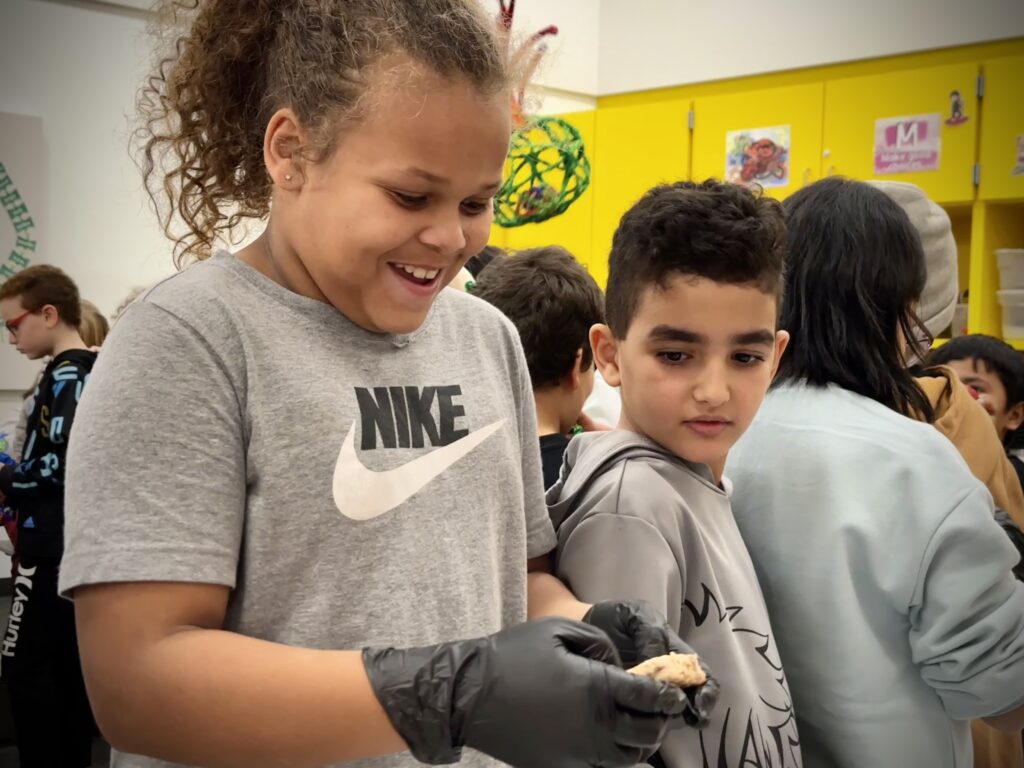
The questions are compelling, the enthusiasm is palpable, and the opportunities to listen and learn from young people and discover where our own narratives from research labs and classrooms might contribute – is nothing but a joy.
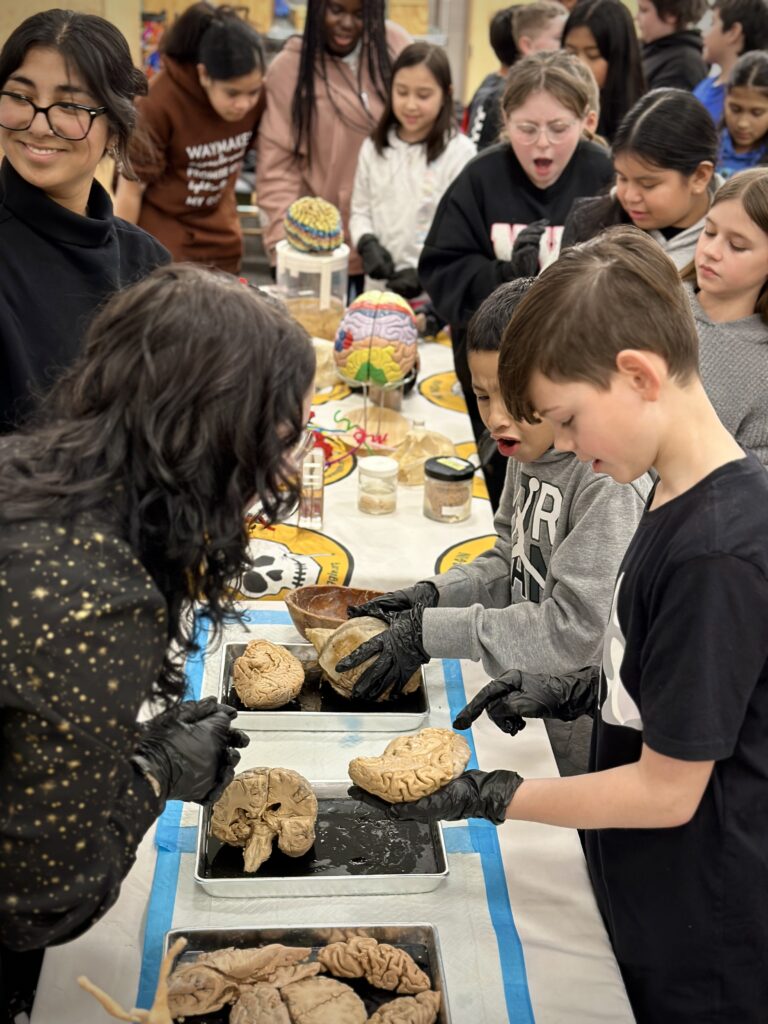
So BIG thanks go to our incredible student and faculty outreach volunteers!
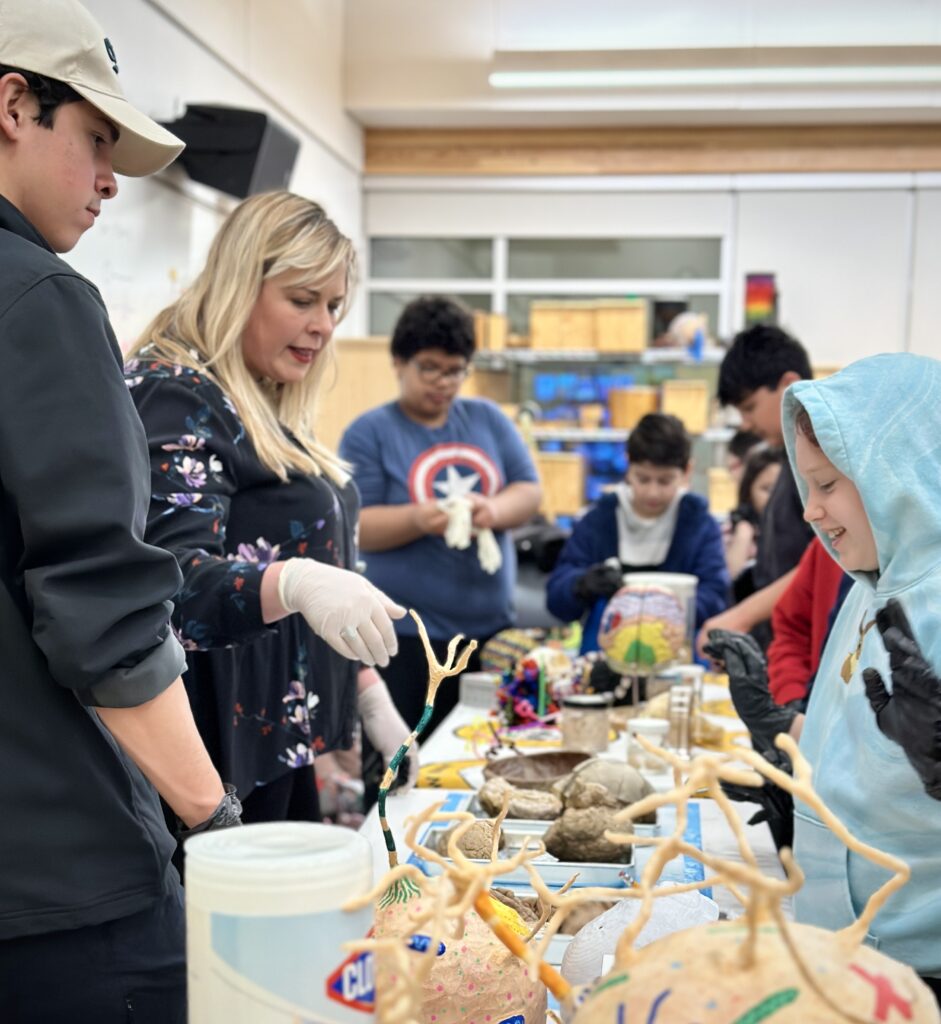
On a recent Thursday morning, undergraduates Zach Salcido, Natalie Robison and Jennie Terranova, who are each pursuing the Interdisciplinary Neuroscience minor at Portland State, joined Dr. Denesa Lockwood from OHSU to meet with over 200 enthusiastic 3rd through 5th graders at George C. Marshall Elementary in Vancouver!
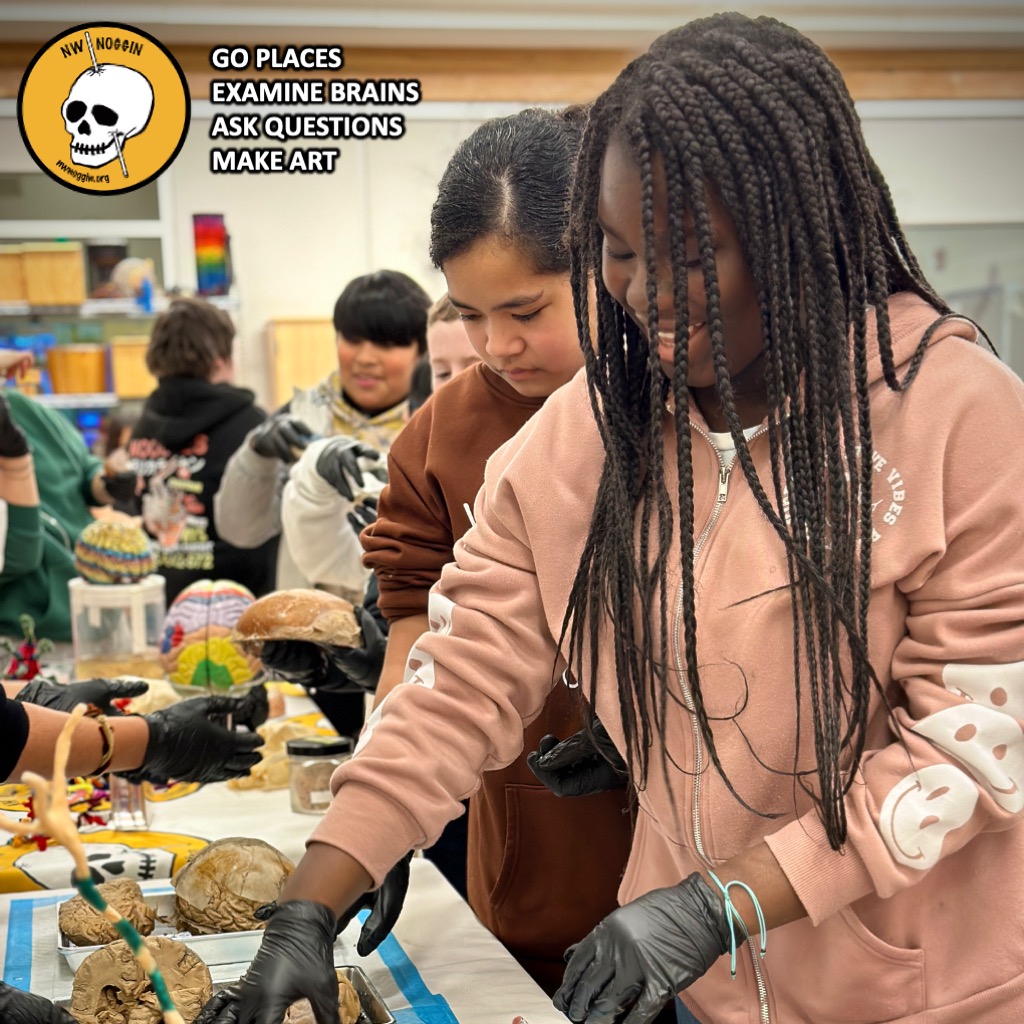
LEARN MORE: George C. Marshall
QUESTIONS FROM ELEMENTARY SCHOOL!
Can a skull regenerate?

Skulls are amazing – and are remarkably variable in thickness and structure. Look (above) at how thin the temporal bone is beneath that zygomatic arch! And the skull is really paper thin above our eyeballs!
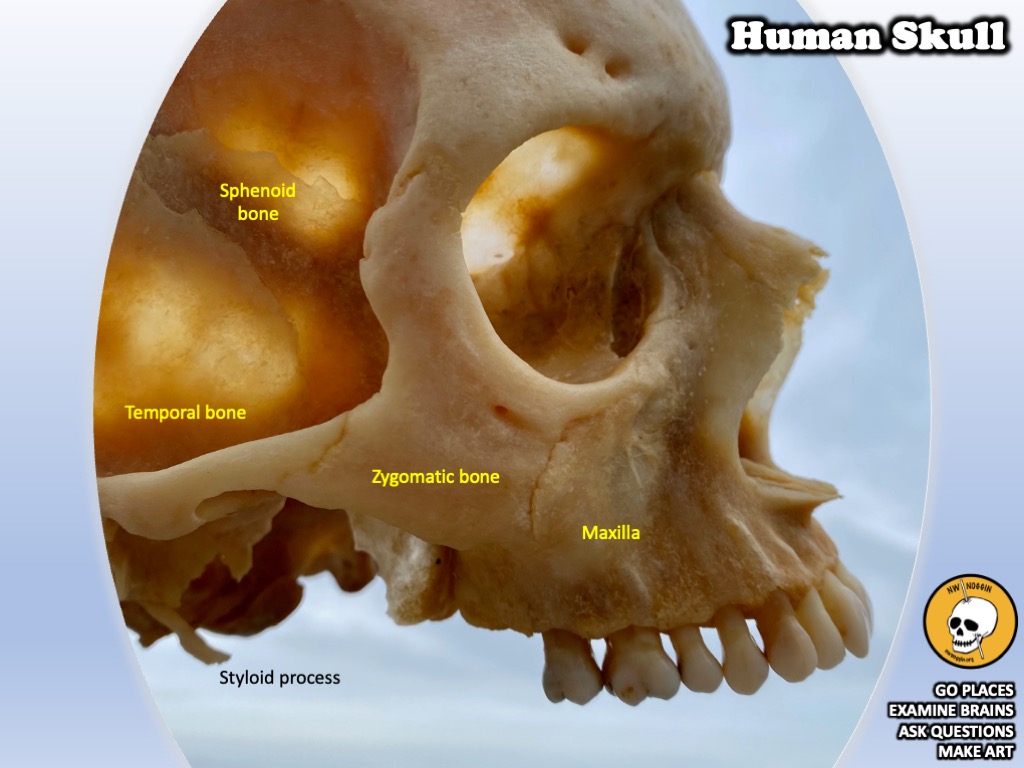
We brought Marshall students a set of animal skulls, including a donated human skull from an individual who’d undergone brain surgery several decades before they passed. The portion of their skull removed during surgery did die, but you can see how the healthy surrounding bone tried to grow into that re-attached piece (the bone flap) afterwards!


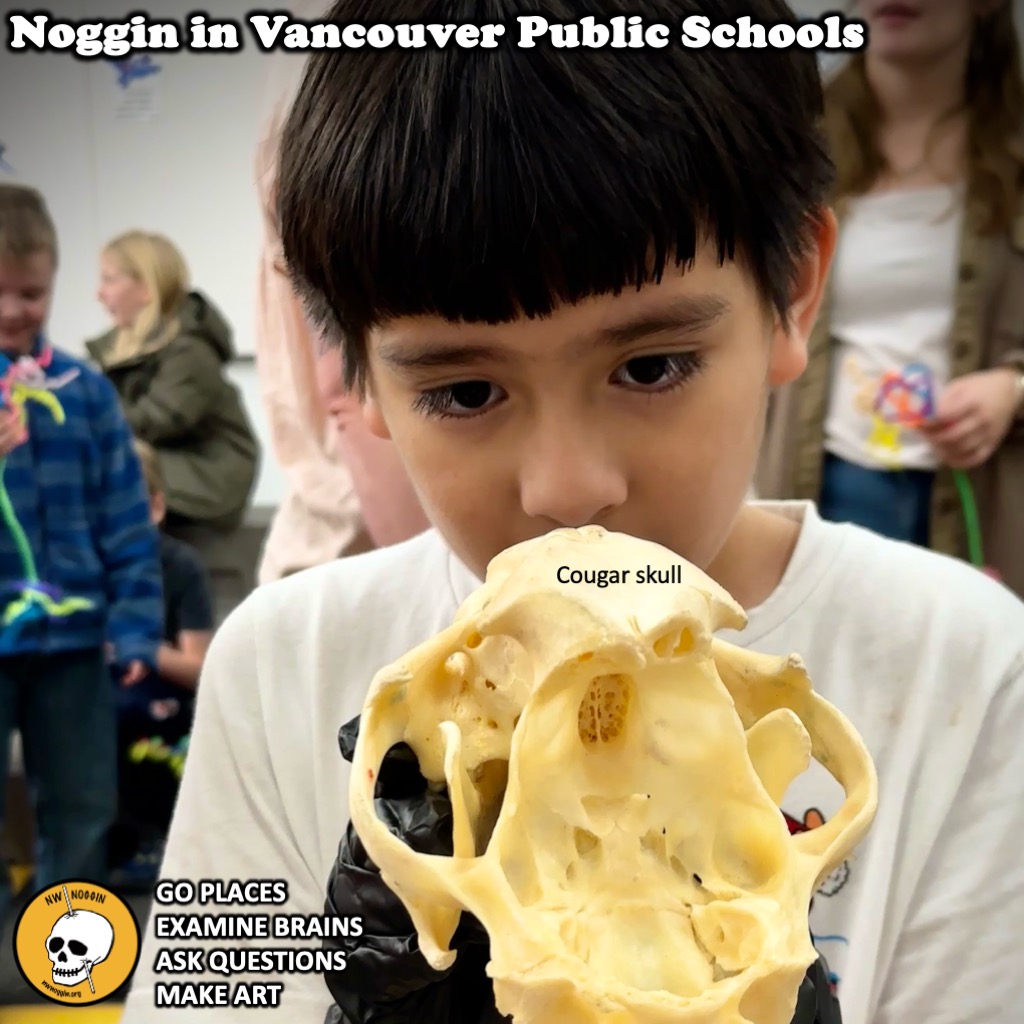
LEARN MORE ABOUT SKULLS: Living like bears
LEARN MORE: Osteogenesis: The Development of Bones
LEARN MORE: Growing skull fractures: strategies for repair and reconstruction
MORE QUESTIONS
Can the brain regenerate? What is the difference between regeneration and healing?
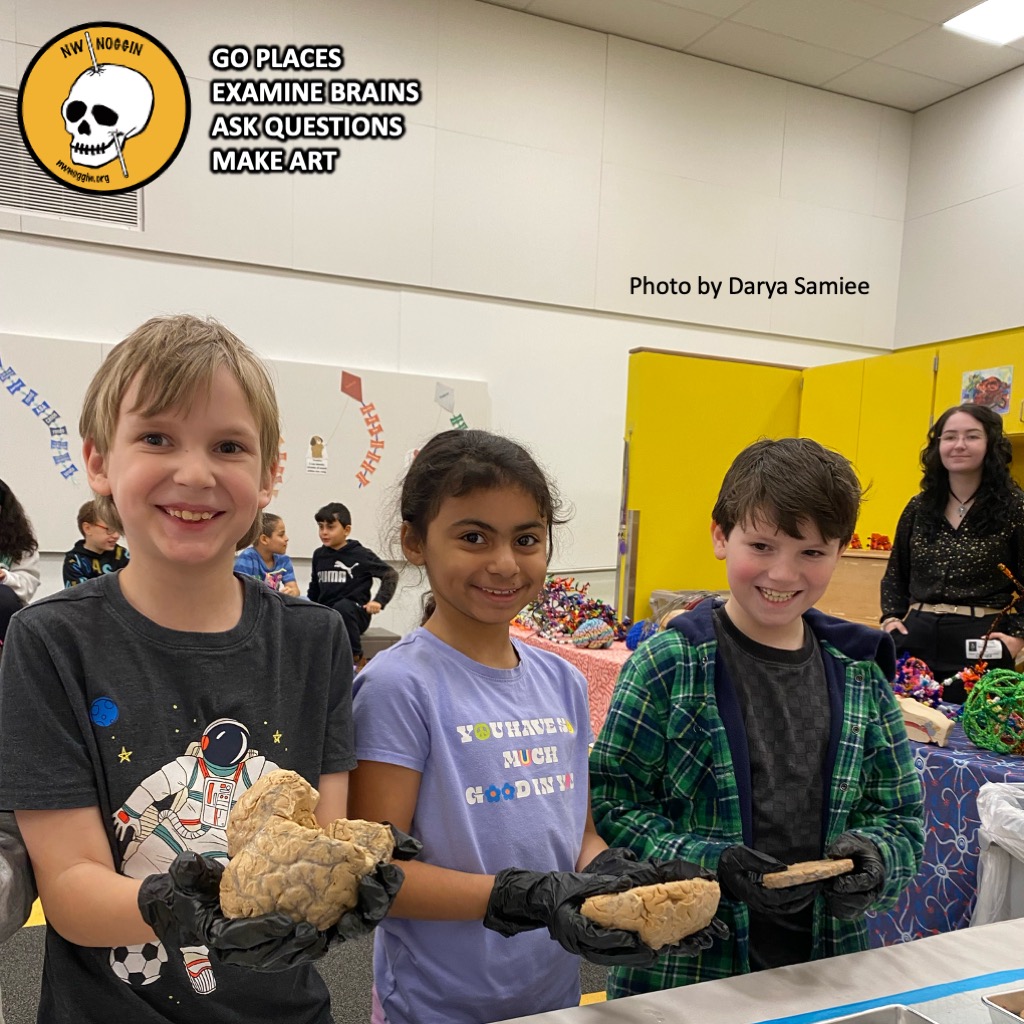
“In contrast to many other mammalian organs, the brain lacks regenerative capacity (with some exceptions) and therefore, neurons can only be restored through an exogenous route, e.g., via cell transplantation. The past years have witnessed impressive developments in obtaining novel cell sources for cell transplantation…”
LEARN MORE: Editorial: Regeneration and Brain Repair
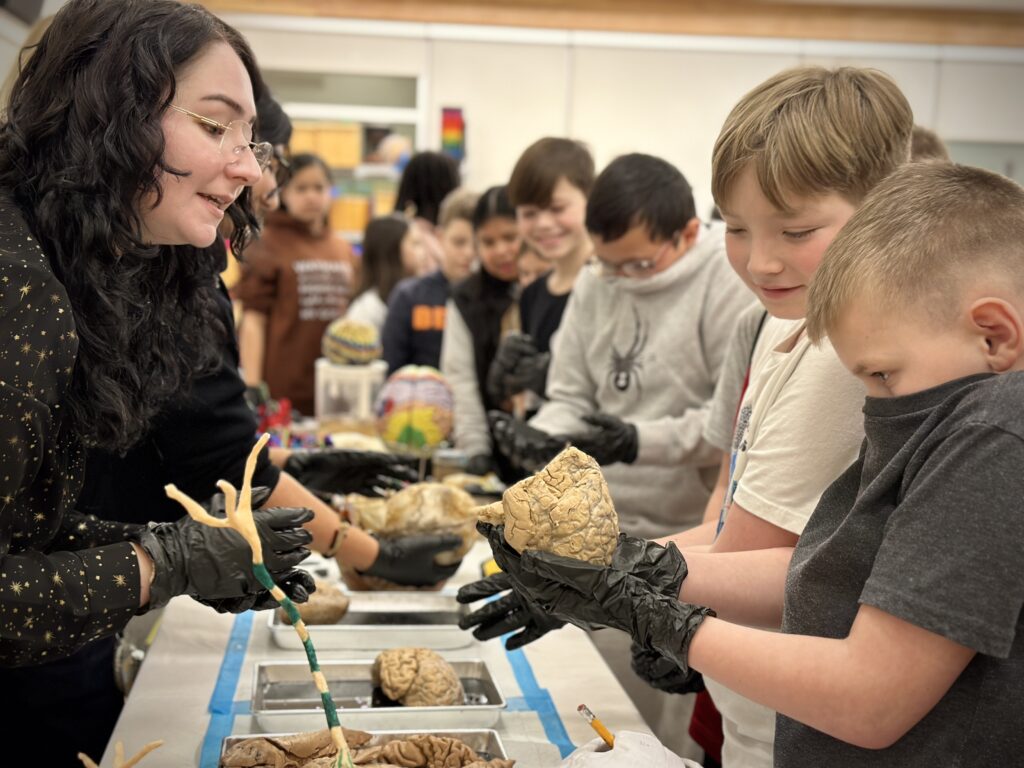
LEARN MORE: Dynamic Brains and the Changing Rules of Neuroplasticity: Implications for Learning and Recovery
LEARN MORE: Neurorepair and Regeneration of the Brain: A Decade of Bioscaffolds and Engineered Microtissue
If the 3D printed brain is made of plastic what is the human brain made of?
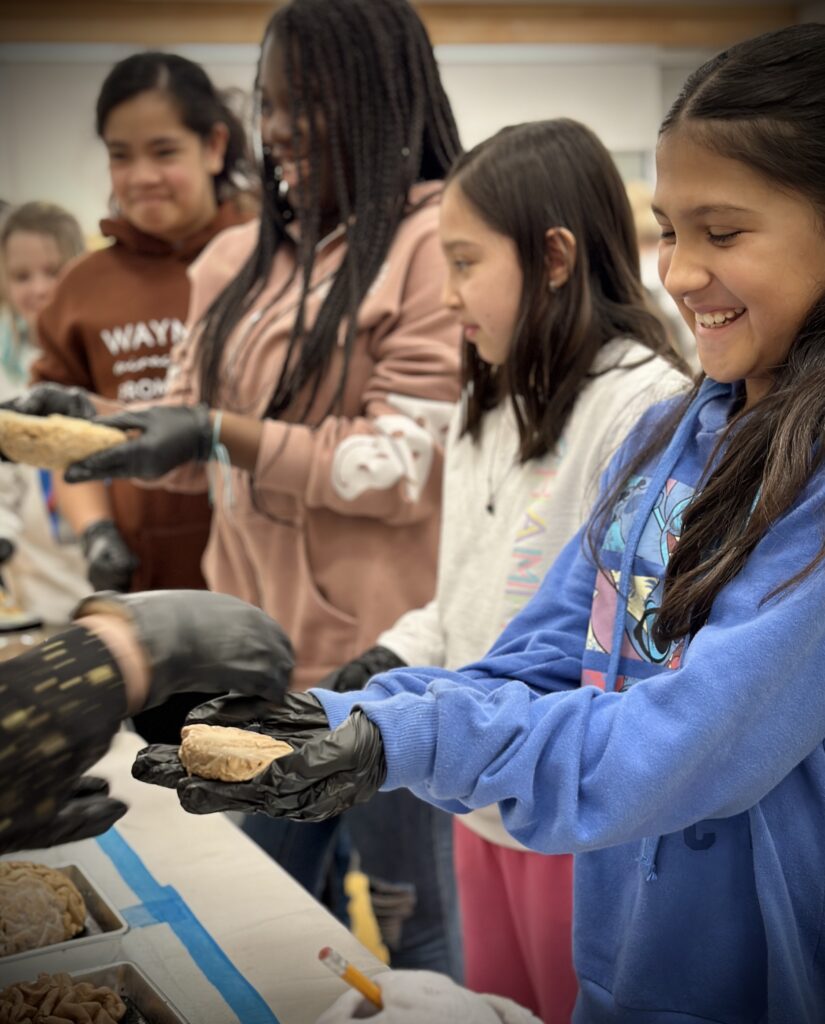
Our brains are made of cells, which are themselves made up of proteins, sugars, fats, nucleic acids and other chemical parts! What you eat matters, because your food becomes YOU!
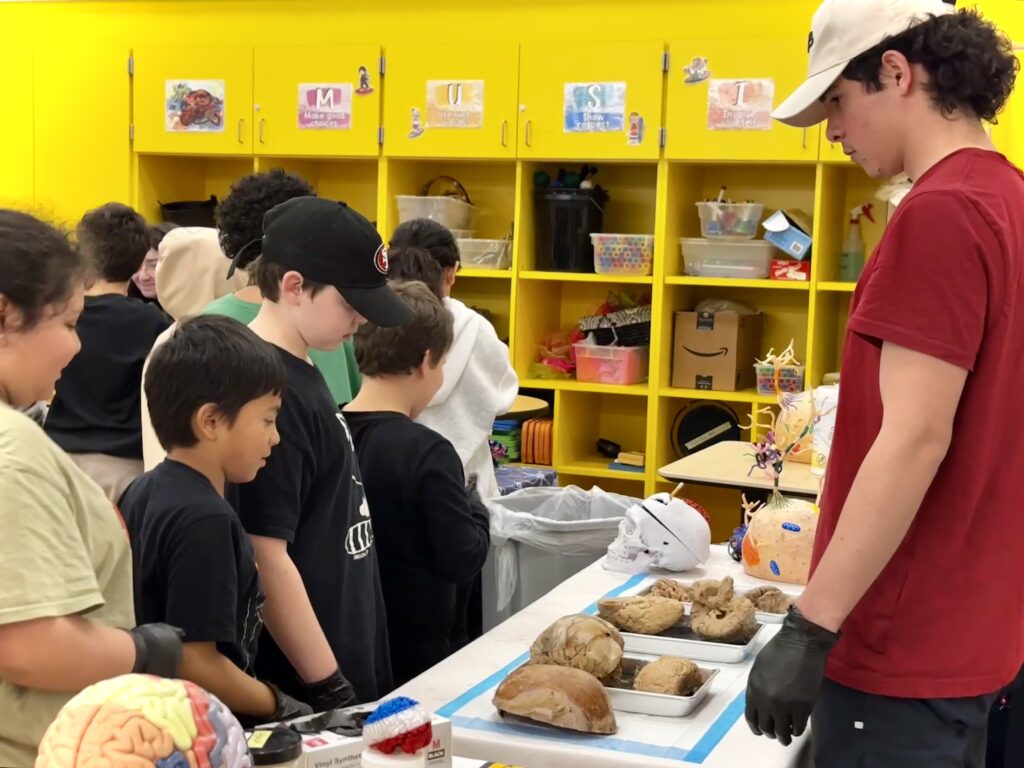
The colorful 3D printed brains we brought are actually made of polylactic acid (PLA), a “bio-polyester” that is biodegradable and recyclable, and therefore less toxic to the environment than plastic. So just like our real noggins, these 3D-printed versions will also ultimately be broken down by microbes (though more slowly)!
LEARN MORE: Critical Review on Polylactic Acid: Properties, Structure, Processing, Biocomposites, and Nanocomposites
LEARN MORE: What is PLA? Everything you need to know
LEARN MORE: How to 3D Print a Brain
What is the skull made of since it is harder than the brain?
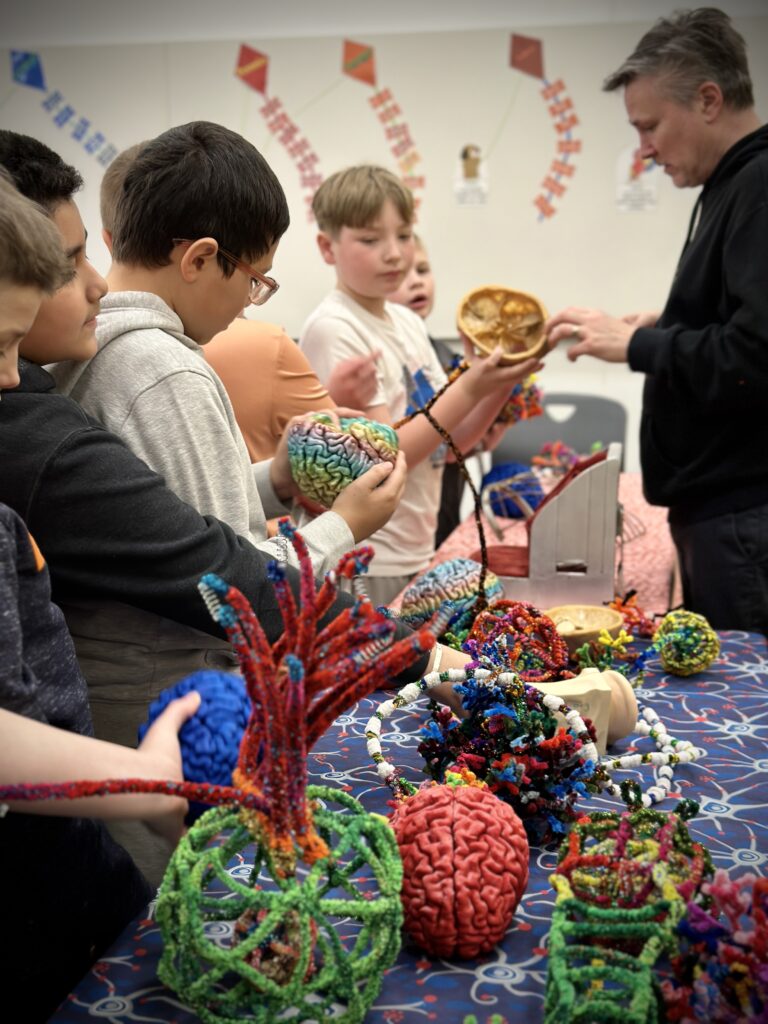

LEARN MORE: What Is Bone?
What happens to the brain when exposed to mold?
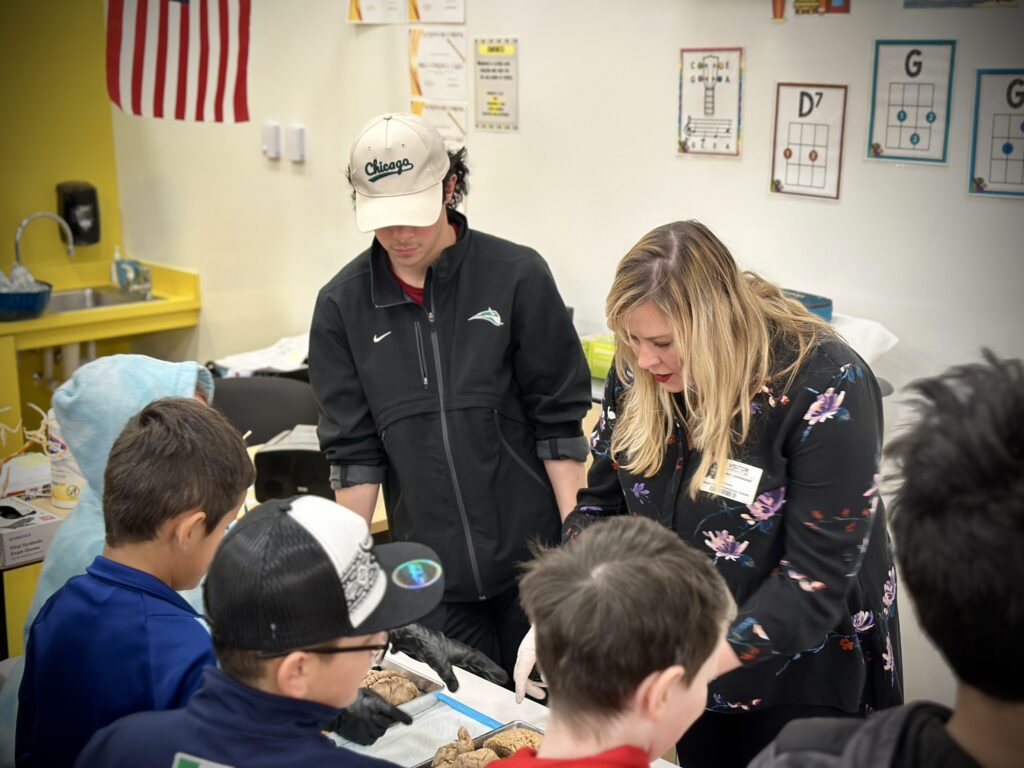
LEARN MORE: Mold inhalation causes innate immune activation, neural, cognitive and emotional dysfunction
LEARN MORE: Mold Infections of the Central Nervous System
Are some molds and bacteria good for us? Are they all bad?
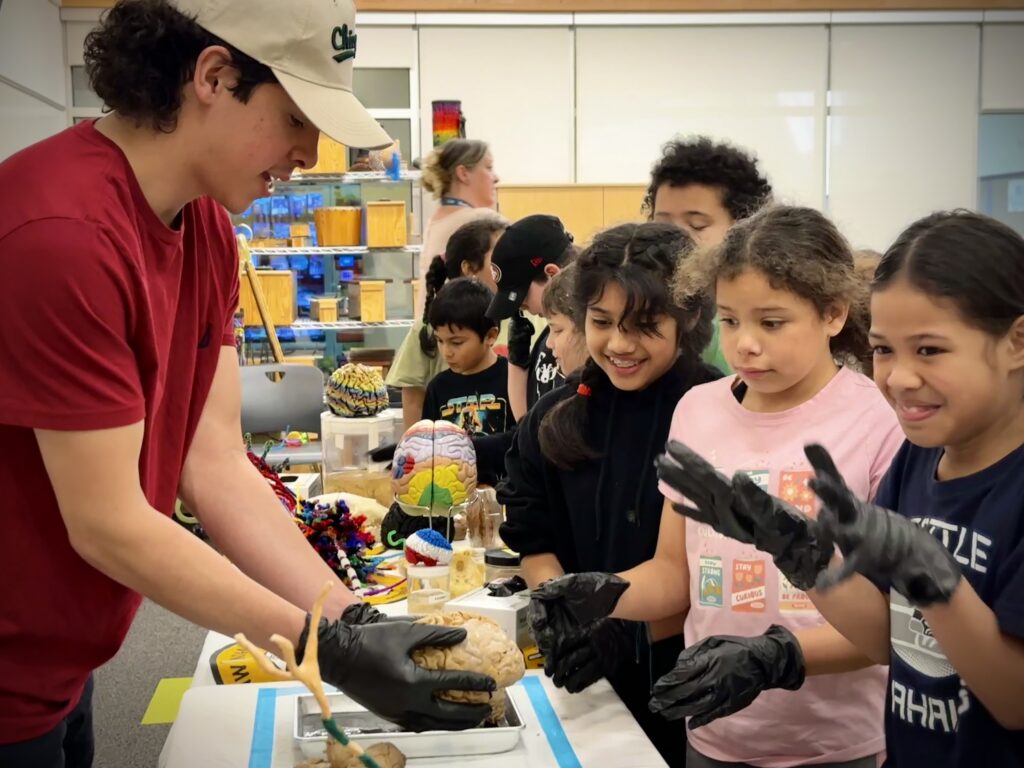
LEARN MORE: Your Inner Worm Bin
LEARN MORE: Gut microbiota, dietary phytochemicals and benefits to human health
LEARN MORE: The role of the microbiome for human health: from basic science to clinical applications
What causes mental disorders?
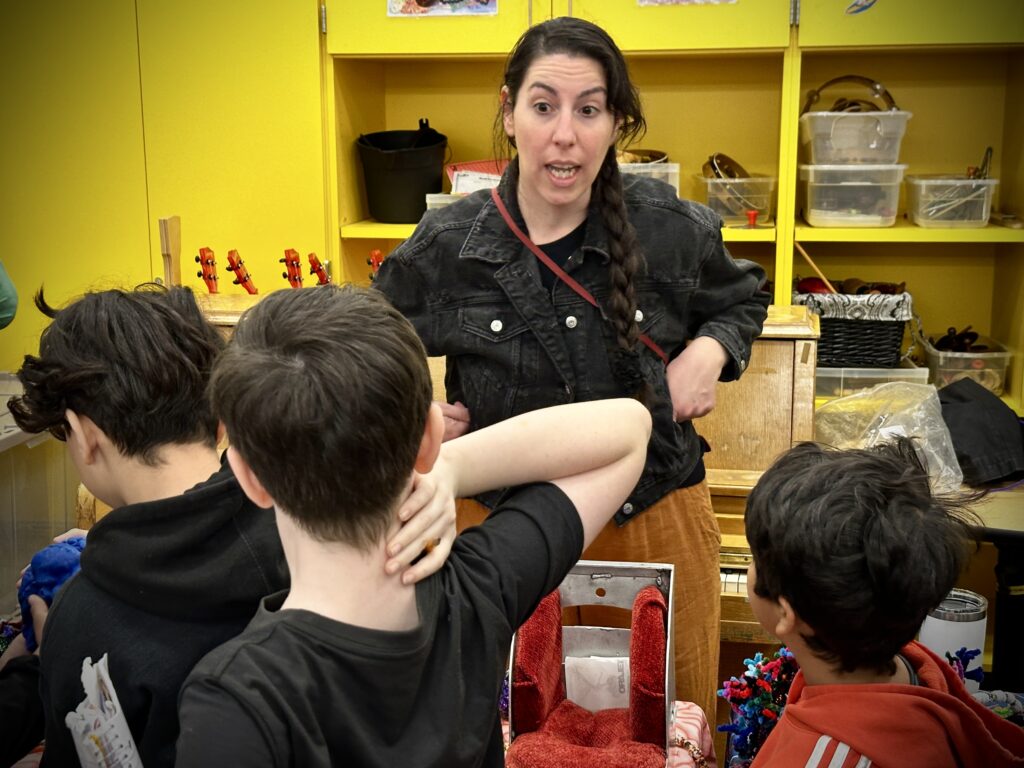
LEARN MORE: Mental Illness
LEARN MORE: Transforming the understanding and treatment of mental illnesses (NIMH)
LEARN MORE: Mental disorders may share molecular origins
Why do I have ADHD? What is ADHD? (No one told me)
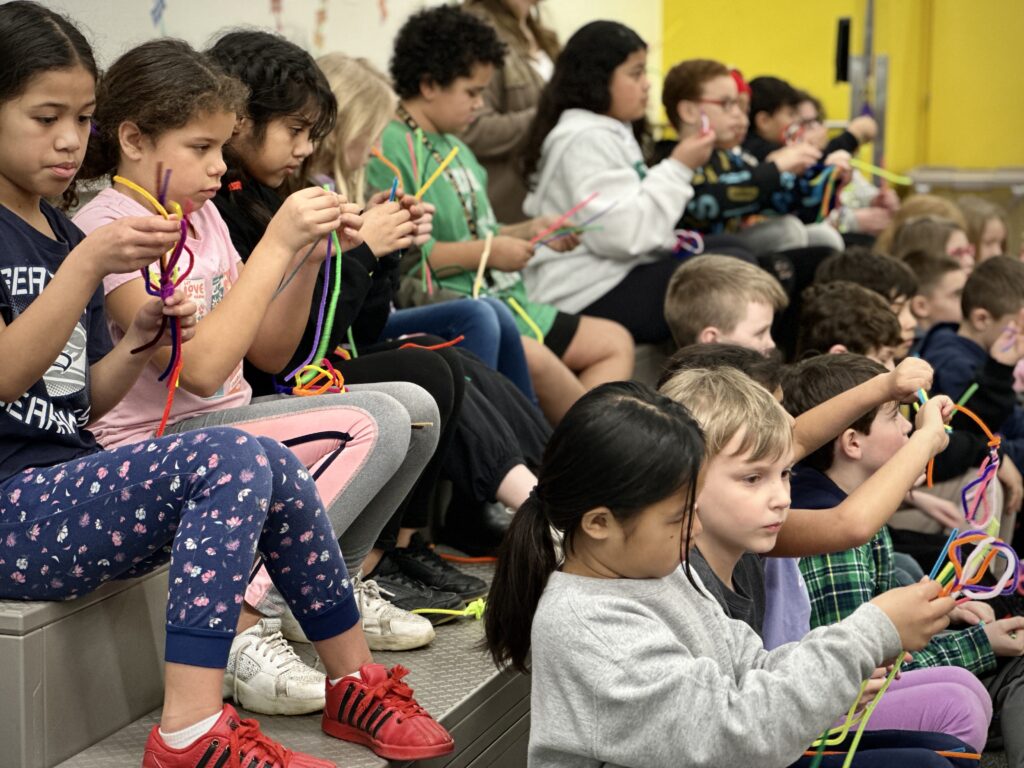
From Kadi Rae Smith, PSU Neuroscience Club:
ADHD, or Attention Deficit Hyperactive Disorder is like a special kind of brain operating system that runs by a different set of rules. There are a lot of reasons for having ADHD. You can inherit a susceptibility from your parents or have your own unique genetic markers for ADHD.
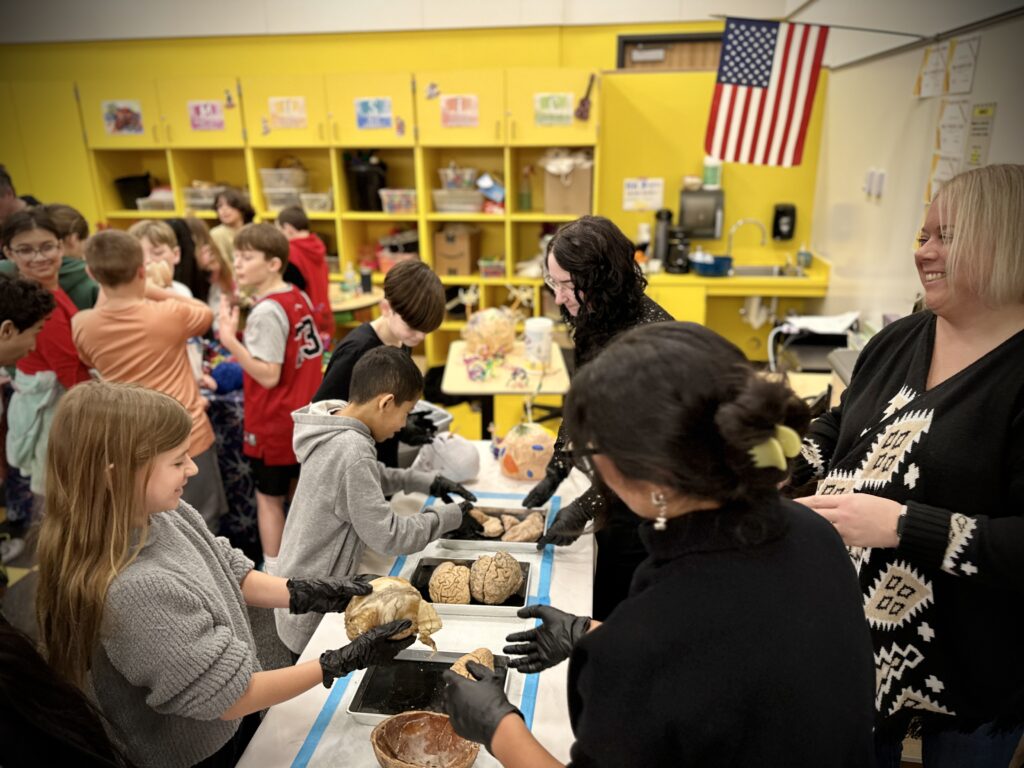
Like iPhones vs Androids, if you have ADHD you need to know how your brain works in order to use it correctly. Just like any kind of system, there are pluses and minuses to having ADHD. For example, if you have ADHD, your brain requires extra stimulation for you to be interested and focus on something. The flipside of that is, if you are really into something, you can focus on it for hours and even days without a break. This is because the chemicals in your body that make you feel happy or excited (serotonin and dopamine) aren’t able to connect as well with some parts of your brain that respond to them (receptors), so it takes a little extra work to tap into.
This can be hard work but it ends up making you feel better and increases your brain power!
LEARN MORE: Attention-Deficit/Hyperactivity Disorder
LEARN MORE: Attention-Deficit/Hyperactivity Disorder in Children and Teens
LEARN MORE: Genetics of attention deficit hyperactivity disorder
LEARN MORE: Dopamine-serotonin interactions in attention-deficit hyperactivity disorder (ADHD)
LEARN MORE: The Neuroscience of Growth Mindset and Intrinsic Motivation
LEARN MORE: ADHD Needs a Better Name. We Have One.
THANK YOU!
“Thank you so much for sharing your time and knowledge with my Marshall Family!! 💛🖤💛🖤 The students are still talking about this experience and they’ve been INSPIRED!! So thank YOU! It was a pleasure having you all.”
— Darya Samiee, Family Community Resource Coordinator, Marshall Elementary
Thanks to all the inquisitive students, teachers and staff at Marshall Elementary, and thanks to our wonderful Northwest Noggin outreach volunteers!!
